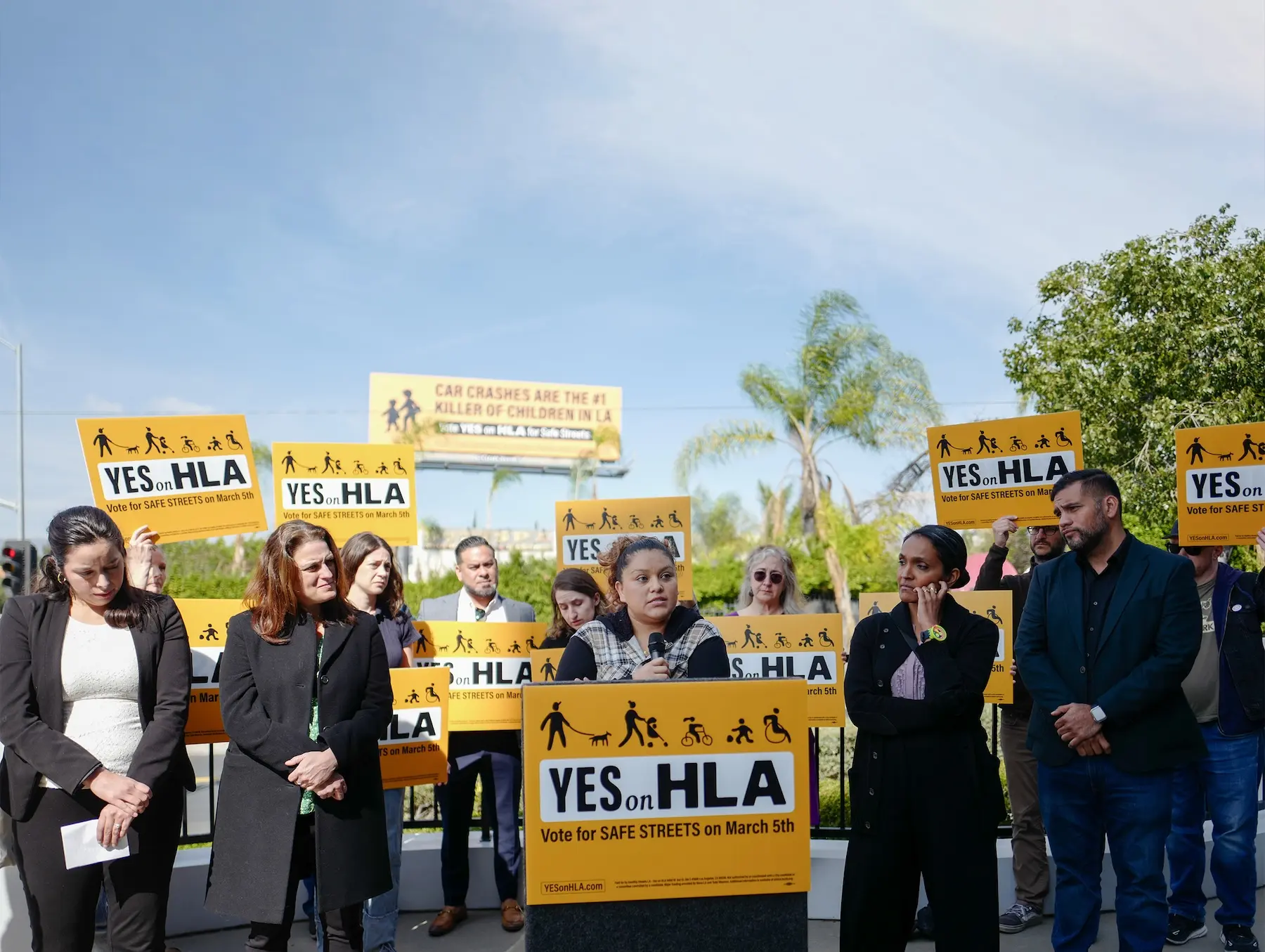


HLA would improve over 2,500 miles of streets in Los Angeles - increasing safety for pedestrians, motorists, bicyclists, and users of public transportation.

Improvements would be made during routine street maintenance, saving money and time. The measure does not raise taxes.

By giving Angelenos more mobility options and improving public transportation, we can free up road space, reduce traffic, and clean our air.
"The rising number of traffic deaths is a preventable tragedy. Voters have the power to make Los Angeles' streets safer. Vote yes on Measure HLA"
A severe injury is any injury other than fatal which results in one or more of the following: broken or distorted extremities, crush injuries, significant burns over at least ten percent of the body, significant blood loss, unconsciousness, paralysis, or spinal injury.
Yes. An analysis of crashes in LA in 2022 showed the majority (56%) of all fatal or severe crashes happened on streets where we haven't implemented Mobility Plan safety improvements, despite those streets only making up a minority (25%) of total street milage in the City. Measure HLA will mandate safety improvements on more than 2,500 miles of LA streets, including the most dangerous in the City. The City's High Injury Network represents the most dangerous streets in LA (6% of LA street miles where 65% of all pedestrian deaths and severe injuries happen) - HLA will add safety improvements to nearly the entirety of this network (93%).
The Mobility Plan was designed to make streets more efficient by giving different modes of transportation dedicated space. This will reduce conflicts on our streets between different kinds of transportation allowing traffic to flow better. It will also make options that are space efficient like walking, taking the bus, or biking more viable - freeing up space on our roads. The Mobility Plan's original environmental document estimates that the number of vehicle miles traveled will go down 4.3% during peak hours by 2035 if the plan is built despite population increase.
No. Currently, the City of Los Angeles has $700 Million in special funds that can only be spent every year on public works and transportation projects like repaving. The problem is almost all of that spending ignores the city's own plan, despite it being the cheapest time to add any improvements.
HLA mandates planned improvements be included during repaving and routine street maintenance, allowing the Mobility Plan to be built for very few additional costs. It will save money over the status quo by preventing the need to tear up a street to add improvements at a later date. HLA will make the city work more efficiently so they don't do the work twice.
Additionally, ignoring the dangerous design of LA's streets is far more expensive than addressing them. Between 2015 and 2021 the City of LA invested $138 million into our Vision Zero program to build safe streets - over nearly the same time, a budget analysis showed StreetsLA and LADOT paid out $196 million in liability claims. We’re spending more settling safe street lawsuits than building safer streets.
Some City officials have put forth unrealistic numbers for how much HLA will cost. Read specific commentary on those here.
The Mobility Plan was passed in 2015 by the City as a visionary document - but it didn't include an implementation plan. Without anything forcing the City to actually build the plan, bureaucracy, lack of political will, and poor department coordination has added an incredible amount of friction to getting things built or even prioritized. Measure HLA will force the city to coordinate between departments and implement the plan efficiently.
At the current pace, the City will fully implement the the Mobility Plan in about 160 years. Measure HLA doesn't mandate a schedule - that's a decision for the city - but at our current rate of repaving the plan could be implemented in as few as 5 years but more realistically will be completed in 10-15 years. This means the Mobility Plan 2035 will be largely implemented by 2035.
Implementing the Mobility Plan will speed up emergency responders. 300 miles of transit only lanes and hundreds of miles of safe street reconfigurations that add center turn lanes will allow emergency vehicles to speed past traffic. The Mobility Plan Environmental Review Document found the same: "Emergency vehicles would not be significantly impacted because California state law requires that drivers yield the right-of-way to emergency vehicles and remain stopped until the emergency vehicles have passed. Generally, multi-lane roadways allow the emergency vehicles to travel at higher speeds and permit other traffic to maneuver out of the path of the emergency vehicle. In addition, emergency service vehicles would be able to utilize the bus-only lanes when responding to an emergency which could help to improve travel times along the TEN corridors. Therefore, no impact related to emergency access would occur."